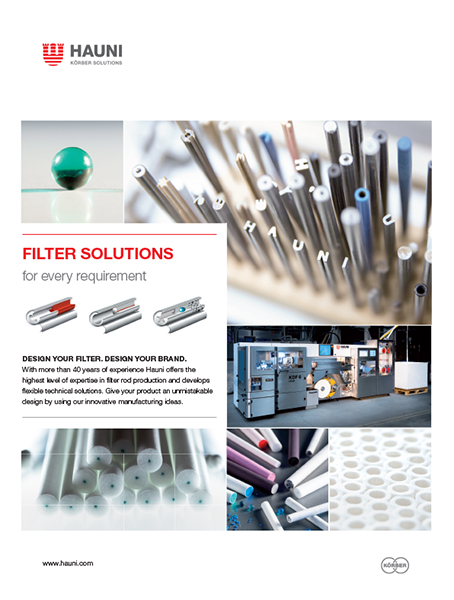Counting Down
- Also in TR Print Edition Regulation
- August 1, 2020
- 0
- 12 minutes read


The nicotine industry prepares for a shakeout in the wake of the premarket tobacco product application deadline.
By Kenneth Robeson

The phrase “time is money” has seldom been more apt for the tobacco industry.
The United States District Court recently granted the Food and Drug Administration’s (FDA) request for an extension of the premarket tobacco product application (PMTA) submission deadline for certain tobacco products, which the FDA requested due to the Covid-19 pandemic. Applications are now required to be filed by Sept. 9, 2020, for many e-cigarettes, cigars and other deemed tobacco products.
What does this mean for the tobacco industry? Several things—from a significant reduction in the products that retailers can place on store shelves to changes in management, manufacturing, R&D and marketing.
“Those working towards a PMTA have benefited most as this has either provided the time to complete existing studies or generate more data,” said Chris Allen, vice president of scientific and regulatory affairs for Broughton Nicotine Services, a privately owned laboratory delivering analytical, scientific and regulatory services for the electronic nicotine-delivery systems (ENDS) industry based in Lancashire, England. “Also, those that are intending to exit the market have a slight reprieve in that they can continue selling their products for an extra 120 days.”
In addition to a significant reduction in the product portfolio, said Allen, manufacturers are coming to the realization that they are going to need to invest “far more” in their quality-management systems as manufacturing guidance evolves. “Although it is not expected the manufacturing regulations will be as stringent as pharmaceutical GMP, it may be significantly higher than the standards that many companies currently work to.”
‘The reality’

“The deadline change was triggered by the Covid situation and requested by the FDA, which stated, among other things, that it had refocused some of FDA CTP staff on other emergency matters related to Covid,” noted Patricia I. Kovacevic, a global legal and regulatory strategist and attorney and the founder of consulting firm Regulation Strategy, which has offices in Tampa, Florida, USA, and London. “While the extra time appears beneficial to the entire industry, the reality is that most clinical studies, testing labs and so on would not have carried on, at least during the three critical lockdown months, April to June.”
Thus, Kovacevic added, there is “a slight benefit” for the industry to have additional time to refine PMTA submissions. “But those who were not ready with the substantive work needed for PMTAs—including various clinical and nonclinical controlled trials—would not see their situation improve much due to the extension.”
“For vapor, it doesn’t substantively change the picture,” suggested Barnaby Page, editorial director of ECigIntelligence, a provider of detailed global market and regulatory analysis, legal tracking and quantitative data for the e-cig, heated-tobacco and combustible-alternatives sector worldwide, and TobaccoIntelligence. “Any company which was not already reasonably well prepared to submit by 20th May is unlikely to be able to make it by 9th September.”
However, Page added, “for those who were close, it will be welcome given that the run-up to the 20th May deadline came at possibly the most disruptive point of the Covid pandemic.”
According to George Parman, director of communications for Altria Client Services in Richmond, Virginia, USA, his company submitted PMTAs for 35 On! Nicotine Pouch products on May 15, and the FDA accepted them for scientific review in the second week of June. They are manufactured by Helix Innovations, an Altria joint venture responsible for the global On! nicotine pouch product portfolio. To support the applications, Altria submitted more than 66,000 pages of documentation, including six primary studies.
The On! nicotine pouches are tobacco leaf-free and available in seven flavors and five nicotine levels. The product line was distributed in over 28,000 stores at the end of the first quarter, including the top five convenience store chains by volume. According to IRI, total oral tobacco-derived nicotine category sales in 2019 grew approximately 275 percent compared to 2018.
“We believe the scientific evidence in these applications demonstrates that the marketing of On! is appropriate for the protection of public health,” said Paige Magness, senior vice president of regulatory affairs for Altria Client Services, in a release. “On! nicotine pouches are a key part of our vision to responsibly lead the transition of adult smokers to a noncombustible future.” The FDA will now undertake a substantive scientific review of the applications.
‘Subjective term’

And for those companies that will not be ready in time?
“Ready,” Kovacevic believes, “is a subjective term in this context.” Small manufacturers would not have had the resources needed to comply no matter what the deadline might have been “but would have enjoyed the additional time to participate in the market. The top five bestselling products manufacturers were preparing for this moment, some as early as 2013.”
If a company has not amassed the necessary science and assembled the right scientific and regulatory team beginning at least two years ago “or at least early last year, at this point it is too late to consider anything else but a last-moment attempt at litigation if even that were possible,” Kovacevic added.
Maggie Gowen, marketing director for Avail Vapor in Richmond, Virginia, USA, said that ENDS manufacturers who don’t submit a PMTA by the new date will be considered noncompliant. “It will be up to the FDA how they choose to enforce the industry after the deadline. Reasonable regulation is needed based on sound science.”
What comes next cannot help but be influenced by the Covid-19 pandemic, said Broughton’s Allen, who emphasized that ENDS products are designed to deliver chemicals deep into the lungs. “We may not like or agree with regulation, but it is inevitable for any major industry and there to protect us. There is undoubtedly a loss in consumer confidence in the safety of ENDS and no data on the risk of long-term use.”
The regulations, he added, must see to it that everything possible is done to ensure that “the safest of products are on the market [to] protect the public but also the long-term future of the industry.”
At the manufacturer level, ECigIntelligence’s Page predicted, there will be fewer companies, “probably many fewer, clear winners and losers from the PMTA process.” For retailers and consumers, the long-term changes “will not be so dramatic once the short-term shock of many brands disappearing has been adjusted to.” What he termed the “wildcard” is whether the FDA turns out to prefer certain kinds of devices to others. “For example, if it seems to favor open or closed systems. That could have a substantial effect on retailing if some channels end up with lots of legal products and others with many fewer.”
“The immediate—as in 10th September—impact on retailers and consumers is likely to be negligible,” Page said. “We don’t expect the FDA to start enforcement immediately on brands that have not submitted a PMTA application.” Over the longer term, of course, the number of available products will diminish. Just how long that “longer term” is remains an open question. “It could be a few months; it could even be a couple of years.”
Page and his colleagues think it likely that there will be “some tolerance” shown to applicants who miss the deadline “as long as they can demonstrate they are well advanced in preparing their application and are serious about doing it.” Retailers and consumers, however, “can’t really prepare with any confidence. The ball is in the manufacturers’ court right now and then the FDA’s.”
‘Appetite for enforcement’

Most c-stores and major chains primarily sell products manufactured by companies that will have met the PMTA submission deadline, noted Kovacevik, and may legally continue to sell their products “for at least one year thereafter and longer if FDA issues a marketing order following the review of the respective products’ PMTAs.”
At the same time, she noted, the FDA’s “appetite for enforcement is relatively low in general, and the product universe is so vast, with so many SKUs—potentially millions of SKUs—that it will take FDA months, if not years, to figure out what products need to be taken off the market because a PMTA or other type of premarket application was not filed by the respective deadline, and to issue warning letters, then to follow up with more stern enforcement action.”
Another factor to consider is that a new administration in Washington, D.C., might bring “interesting developments not necessarily favorable to the ENDS industry,” Kovacevik added, “and change is always challenging.”
Consumer choice will shrink, Avail Vapor’s Gowen concurred, because not every manufacturer will be able to afford the “enormous” expense of the PMTA process. “There is a big fear that we will see a shift back to deadly combustibles, unfortunately.” There is, she conceded, “a lot of politics in play at the executive, federal, state and local levels.” There is also what she called “an enormous amount” of misinformation about the vapor industry, which “as a whole has been unfairly blamed due to a few bad actors, and that includes the CDC [Centers for Disease Control and Prevention]. If a company wants to remain a player in the marketplace, the hope is they will submit a PMTA by the Sept. 9 deadline.”
And for the remainder of 2020?
“It’s difficult to tell at this point,” Gowen concluded. “It will certainly be an interesting year, as if it hasn’t been interesting enough.”



